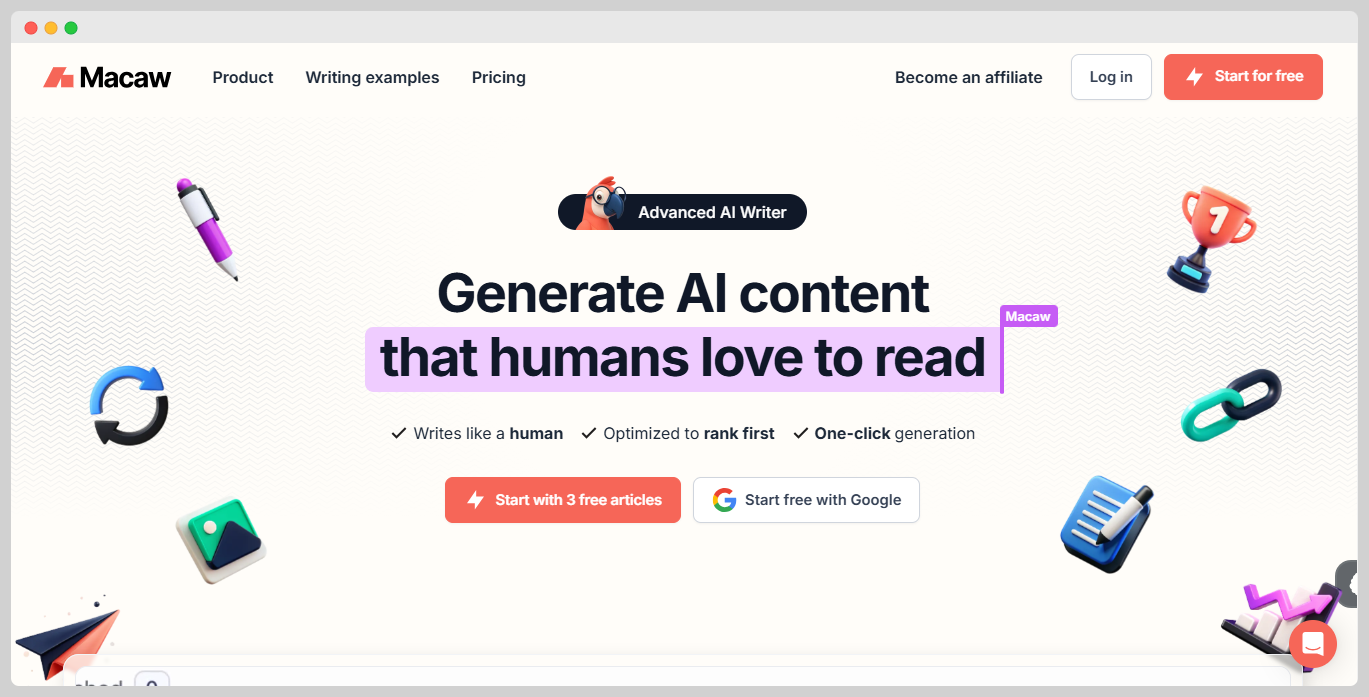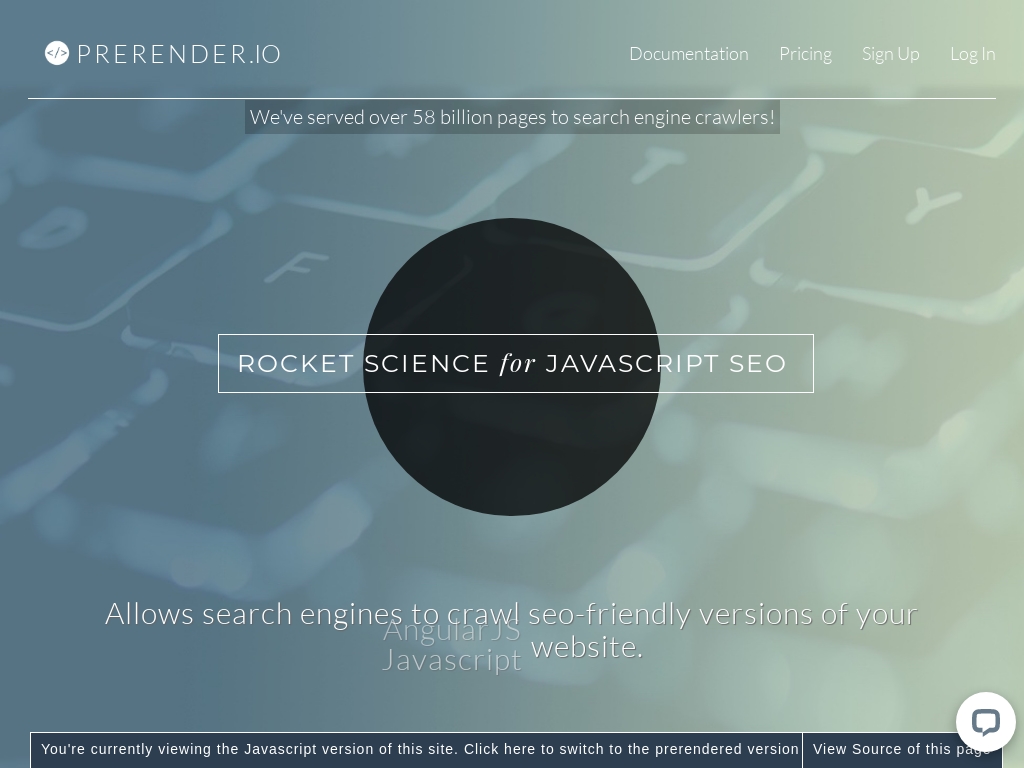
How Tsering Redmond Built Macaw to 17 Paying Companies in One Month
Who is Tsering Redmond?
Tsering Redmond, the founder of Macaw, previously led a marketing team at a large SaaS company and utilized his experience with AI-driven SEO strategies to bootstrap his own venture.
What problem does Macaw solve?
Macaw helps businesses create SEO-friendly, human-like content quickly, solving the challenge of producing engaging articles without needing extensive resources or expertise.

How did Tsering come up with the idea for Macaw?
While leading a successful marketing team, Tsering Redmond was introduced to ChatGPT, sparking his curiosity about its potential for content creation. As an experiment, he used it to generate numerous web pages focused on various marketing topics, bypassing the need for a large team of writers. The strategy proved highly effective, significantly increasing site traffic and revenue.
However, when trying to replicate this success for other companies, Redmond discovered they lacked the necessary resources. This gap revealed an opportunity: a need for a tool that could empower businesses to leverage AI in content creation without extensive resources. Teaming up with a skilled developer, he refined this concept based on feedback and experiences, ultimately creating Macaw to help businesses generate quality SEO content efficiently.
Redmond learned that scaling an effective service into a software product required deep iteration and attention to user feedback. His journey underscores the importance of identifying core needs in the market and validating them through firsthand experience, transforming a niche discovery into a scalable business solution.
How did Tsering Redmond build the initial version of Macaw?
Building Macaw involved a meticulous process of software development using a tech stack comprising JavaScript, Node.js, React, OpenAI, and Claude. The initial phase of product development took about six months, during which Tsering Redmond and a developer collaborated to refine the AI writing tool through multiple iterations and feedback sessions. They faced challenges while optimizing the AI to produce human-like, SEO-optimized content, requiring hundreds of new prompts to handle various edge cases.
The team utilized insights from working with eight different funded SaaS companies to continuously enhance the product's efficacy, leading to a tool that allows brands to independently execute high-quality content strategies. Despite the hurdles, the experience of building Macaw was both intense and rewarding, resulting in a product that significantly outperforms initial expectations in functionality and user engagement.
How did Tsering launch Macaw and get initial traction?
Personal Network Outreach
Tsering Redmond, the founder of Macaw, used his personal network to spread the word about the new business. Having spent years working in the marketing and SaaS industry, he had a list of contacts who were already interested in the potential of AI in content creation. He reached out to these connections to introduce them to Macaw and offer them a trial of the product. By doing so, he was able to directly target companies that had previously expressed interest in similar strategies.
Why it worked: By reaching out to his network, Tsering could communicate directly with potential customers who trusted his expertise and were familiar with the previous successes in similar ventures. This resulted in immediate interest and a willingness to test Macaw.
Social Media Engagement
Tsering utilized social media platforms, particularly X (formerly Twitter), to engage with potential users by sharing his journey and the effectiveness of Macaw. He made use of storytelling through detailed threads about Macaw's development and its ability to solve specific problems marketing teams faced with AI-generated content.
Why it worked: Social media, particularly X, is a powerful platform for storytelling and gaining engagement. Tsering's transparency and openness about Macaw's capabilities and his personal journey resonated with his audience, leading to increased visibility and credibility. This approach resulted in over 90 sign-ups soon after launch.
Free Trial Offer
Macaw offered a free trial to encourage users to experience the benefits of the software firsthand. This was strategically advertised both within direct outreach and on social media platforms. By allowing potential customers to test the software, users could see the quality and effectiveness of Macaw's AI content generation.
Why it worked: Offering a free trial lowered the entry barrier for new users, allowing them to try the product without any financial commitment. This strategy proved effective, converting trial users into 17 paying companies soon after launch.
Metrics:
- Over 90 people signed up within the first month of launch.
- 17 companies transitioned from trial to paying customers shortly after.
What was the growth strategy for Macaw and how did they scale?
SEO
Macaw's growth heavily leveraged a strategic SEO approach. By utilizing ChatGPT, they created thousands of web pages and articles with variations of core keywords, such as "Marketing Strategy Template" and "Sales Strategy Template," tailored for different industries and use cases. This content generation was systematic and vast, quickly boosting their website traffic to hundreds of thousands of visitors monthly.
Why it worked: The focus on programmatic SEO meant they could scale content creation without relying on user-generated content or a large team of writers. The AI technology allowed for rapid development of SEO-optimized pages, tapping into various keyword variations effectively. This strategy was a massive success, driving significant new revenue and becoming a reliable source of customer acquisition.
Positioning and Branding
Macaw's website achieved a 27% conversion rate from visits to sign-ups by effectively positioning itself in the market. They branded Macaw as a tool that creates "Content humans love to read," tackling a common objection potential users have about AI-generated content, which often lacks the human touch.
Why it worked: They recognized early the market's reluctance toward AI content that sounds robotic. By positioning Macaw's output as high-quality and human-like, and by backing this claim with free initial articles, they could convert skeptical visitors into users more effectively. Their distinct branding helped them stand out in a competitive market, fostering trust and encouraging trial and adoption.
Objection Handling
Macaw's landing page is crafted to address and dispel potential users' objections and concerns, mimicking the thought process of a sales conversation. They methodically mapped out possible objections such as cost, compatibility, and simplicity, presenting reassuring answers effectively on their page.
Why it worked: By preemptively answering common questions and concerns, the landing page functioned like a scalable sales pitch, reducing friction in the decision-making process. This strategy increased visitor confidence, contributing to the high conversion rate seen on the site.
What's the pricing strategy for Macaw?
Macaw offers three free articles and then adopts a freemium model with paid plans for continued access to their AI-driven SEO content generation tools.
What were the biggest lessons learned from building Macaw?
- Iteration is Key: Macaw's journey showed that iterating on ideas and strategies is crucial. They constantly improved their content generation process through feedback, proving that refinement leads to success.
- Solve Real Problems: The founder identified a gap where businesses couldn't effectively use AI for content, and created Macaw to fill this need. A successful business solves existing problems for its customers.
- Leverage Technology: Embracing AI allowed Macaw to quickly generate SEO content, demonstrating the potential of adopting technology to scale operations efficiently.
- Address Core Concerns: By positioning Macaw as producing content "humans love to read," they tackled a key concern of AI-generated content sounding robotic, thus gaining user trust.
- Understand Objections: Macaw effectively mapped user objections and addressed them on their landing page, showing that understanding and responding to customer concerns can significantly boost conversions.
Discover Similar Business Ideas Like Macaw
|
|
Idea
|
Revenue
|
|---|---|---|
|
Prerender.io
|
SEO optimization tool for JavaScript websites.
|
$220K
monthly
|
|
SiteGuru
|
SEO audit tool for website optimization.
|
$5K
monthly
|
|
Huckabuy
|
SEO automation software enhancing website visibility and traffic.
|
$110K
monthly
|
|
BrightLocal
|
Local SEO software and services for marketers.
|
$850K
monthly
|
|
Weichie.com
|
"E-commerce optimization agency for extraordinary brands."
|
$30K
monthly
|
|
Pearl Lemon
|
SEO and lead generation services for businesses.
|
$80K
monthly
|
|
SearchEye
|
"Automated SEO solutions platform for agencies."
|
$95K
monthly
|
More about Macaw:
Who is the owner of Macaw?
Tsering Redmond is the founder of Macaw.
When did Tsering Redmond start Macaw?
2022
What is Tsering Redmond's net worth?
Tsering Redmond's business makes an average of $/month.
How much money has Tsering Redmond made from Macaw?
Tsering Redmond started the business in 2022, and currently makes an average of .

Download the report and join our email newsletter packed with business ideas and money-making opportunities, backed by real-life case studies.

Download the report and join our email newsletter packed with business ideas and money-making opportunities, backed by real-life case studies.

Download the report and join our email newsletter packed with business ideas and money-making opportunities, backed by real-life case studies.

Download the report and join our email newsletter packed with business ideas and money-making opportunities, backed by real-life case studies.

Download the report and join our email newsletter packed with business ideas and money-making opportunities, backed by real-life case studies.

Download the report and join our email newsletter packed with business ideas and money-making opportunities, backed by real-life case studies.

Download the report and join our email newsletter packed with business ideas and money-making opportunities, backed by real-life case studies.

Download the report and join our email newsletter packed with business ideas and money-making opportunities, backed by real-life case studies.















